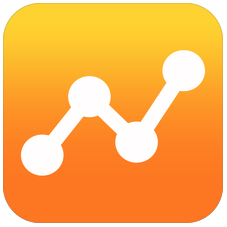TracknShare was the winner of an excellent show down of self-tracking apps. To me this is to this date the most systematic assessment of the usefulness and usability of self-tracking apps. The assessment criteria tell a story of how to approach self-tracking. I am citing those here. All the best with your own Quantified Self Project!
Criteria from the Measured Me Blog: “The app has to be customizable when it comes to measurement scale. Depending on the type of question, I should be able to log data using either Boolean (yes/no), ordinal (e.g., not-much/somewhat/.. /very much,), continuous (e.g., weight or cost), categorical (e.g., cardio type: stationary bike, elliptical or treadmill), or n-point Likert scale (e.g., 7-point scale). In other words, the app should be able to handle the mix of variables of various measurement types.
The app has to offer data portability. I should be able to export data in “csv” or other common format, any time I want, so I can analyze and manipulate it myself. Sorry, but showing me only those pretty charts and trend lines simply won’t do. And remember: that’s my data. I should not pay to access it.
The app has to be truly mobile. That is, it should be able to work in an offline mode, without wireless or WiFi signal (e.g., on subway), at least at the moment of the data entry. If I want a web app, I will use my computer.”
These thoughts express exactly what we had in mind when we initially designed TracknShare. Its sister apps Autism Tracker, Habits Pro, Mindful Eating Tracker, Bowel Mover Pro, Gratitude & Happiness – all follow the same philosophy. Since our apps are extremely customizable and might need a little more attention to learn all features we created different versions to help people with different needs (ASD Spectrum, special education, IBS, eating disorders, mood issues, productivity, …) to get value right from the start.
With a TracknShare mindset, which app should we release next? Let us now.

Recent Comments